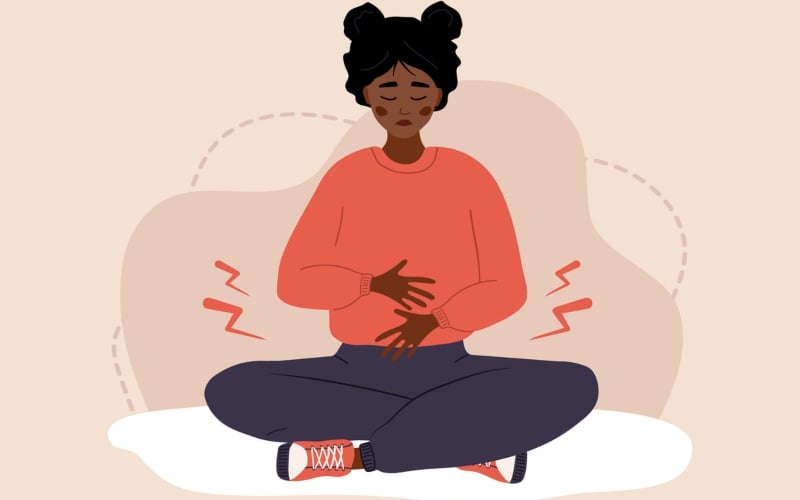A critical problem in the current mental health crisis across age groups is the location of conditions. Mental illnesses are often referred to as invisible conditions, because it is known that whatever is up is hidden, or that an individual may look okay, but not be.
Mental illnesses are known to be based in the brain. The brain is sheltered, but visible by neuroimaging. There are sometimes behavioral expressions that expose whatever is within. There are also medications that can access molecules in the brain, to induce or inhibit them—towards outcomes.
In mental disorders, what is referred to as invisible is the mind. The human mind is the base of thoughts, emotions, feelings and so on. The mind is within the brain, but has a different structure and function from the brain.
Defining the structure of the human mind, at least conceptually, would be useful as a basis to understand where and what is within, so that the individual, loved ones and caregivers can have a design that improves response or control.
The Mind
In neurobiology, studies have shown that all senses or sensory inputs converge at the thalamus, except for smell that does at the olfactory bulb. It is where they are processed or integrated before relay to the cerebral cortex for interpretation.
This means that when stimuli from the eyes, nose, ears, tongue and skin come in, they go to the brain, but land at spots where they are processed, before proceeding elsewhere to be interpreted.
It is theorized that the sensory processing or integration in the brain is into a uniform unit, quantity or identity, which is thought or in the form of thought. This becomes the equivalent, version, representation of all senses and it is what is relayed for interpretation.
This is how the brain generates the mind. This means that whenever an object is seen, there is a version of that object in the mind. It came to be as the result of senses, processed at landing ports in the brain, giving off the mind.
Interpretation in the cerebral cortex is theorized to be knowing, feeling and reaction. Knowing is memory, preceding and dominating others. Interpretation set are of the mind, though hosted in centers in the brain.
Basically, the mind is composed of a relaying or traveling quantity, to destinations to acquire properties. Some of the properties are natural, some are from nurture. All memory, feelings, emotions, reactions are properties in the mind. Thought or their form relays to acquire them to give experiences in any moment.
Quantities are qualified by properties. A memory of something hurtful—as a property—can be acquired, but if there is no extra property of trauma, depression, hurt, it would not be traumatic, hurtful or depressing in that moment.
Though acquisition of properties is to degrees, there has to be an acquisition to make it experienced. For example, cold, heat, sleep, thirst, interest, hate, love, delight, lethargy, liveliness and so forth.
Quantities have sequences of travel, old and new, which—in their own right—are properties. Whatever standard protocol is followed for situations is along old sequences. Whenever adventure or exploration is given a chance, it is for new sequences. Déjà vu could be new following old.
Quantities also have an early split, or go-before, where some in the same beam break to go ahead, following a prior sequence, so that others follow easily. If it matches, fine, if not, the following one goes through the right sequence, exceeding explanations of predictive error, from predictive coding or processing.
Quantities also have prioritization or pre-prioritization phases. Just one thing is prioritized on the mind in any moment. This means that while there could be several streams of awareness, just one thing has the most attention in any moment, though switches between prioritized and pre-prioritized are fast and numerous.
Quantities are relaying dots. Properties are near-stationary planes. Properties have different thickness, shapes and locations. Properties can have a single unit [of minimum information]. They can also hold group information. Properties have a principal spot where just one can go, to have the most domination.
Mental Illness
All depression, anxiety, low mood, mania, unhappiness, confusion, trauma, delusions, fear, paranoia, scattered thinking, hallucinations, hearing voices, self-harm and so forth, are all properties in the mind. Things that help or hurt mental health acquired the property, sometimes in pre-prioritization, others at the principal spot of properties. They are acquired by quantities in deviation, without the ability for prioritized quantities to hold back their effects.
This is how the mind, conceptually, defines consciousness, mental health crisis and illness. The components of mind as descriptive architecture would be useful in removing the invisibility that mental illnesses have—to wield their wreck—sometimes into substance use disorder, self-harm and so on.
There is an explanation for every mental disorder from the components of mind. Advancing with this—as an initial standard—could at least protect the individual and society better, while work advances for cures.
iStock image
The post Neurobiology, Consciousness: Where Is Mental Health, Illness? appeared first on The Good Men Project.
Original Article










